Writing Songs for Two Guitars – Part 1
This is one of the greatest dilemmas that you may have when you are starting a band: you have two guitar players, what do you do with them? In most amateur bands the two guitarist either split in “rhythm vs solo”, or are playing exactly the same thing ll the time — but then, why not having only one guitar player? What these bands do not realize is that it is possible to leverage the presence of two guitar players to make things that a single guitar can not do. The band can sound fuller, bigger, and simply better if the two guitar player share the parts intelligently and avoid to play the same exact thing together.
The same can be said, of course, if you are in the studio and want to record more than one guitar track. While double-tracking (record the same thing twice with a slightly different sound) is a nice trick, you don’t want to be limited by it.
In this first part, we will focus on what to do if one guitar is distorted and the other has a clean sound; in the second part we will see what to do when both guitar are distorted. Let’s go and see some examples.
Power Chords and Strumming
To make a case study, we are going to work with the same chord progression in all this lesson. The chord progression is: Am, F, C, G. This way you can see how different ways of arranging it make for a different emotional content of the song.
The first idea for arranging two guitars is quite simple: the distorted guitar just plays power chords, while the clean guitar strums the full chord. The simples choice is to use the traditional “open strings” chords (LISTEN TO IT):
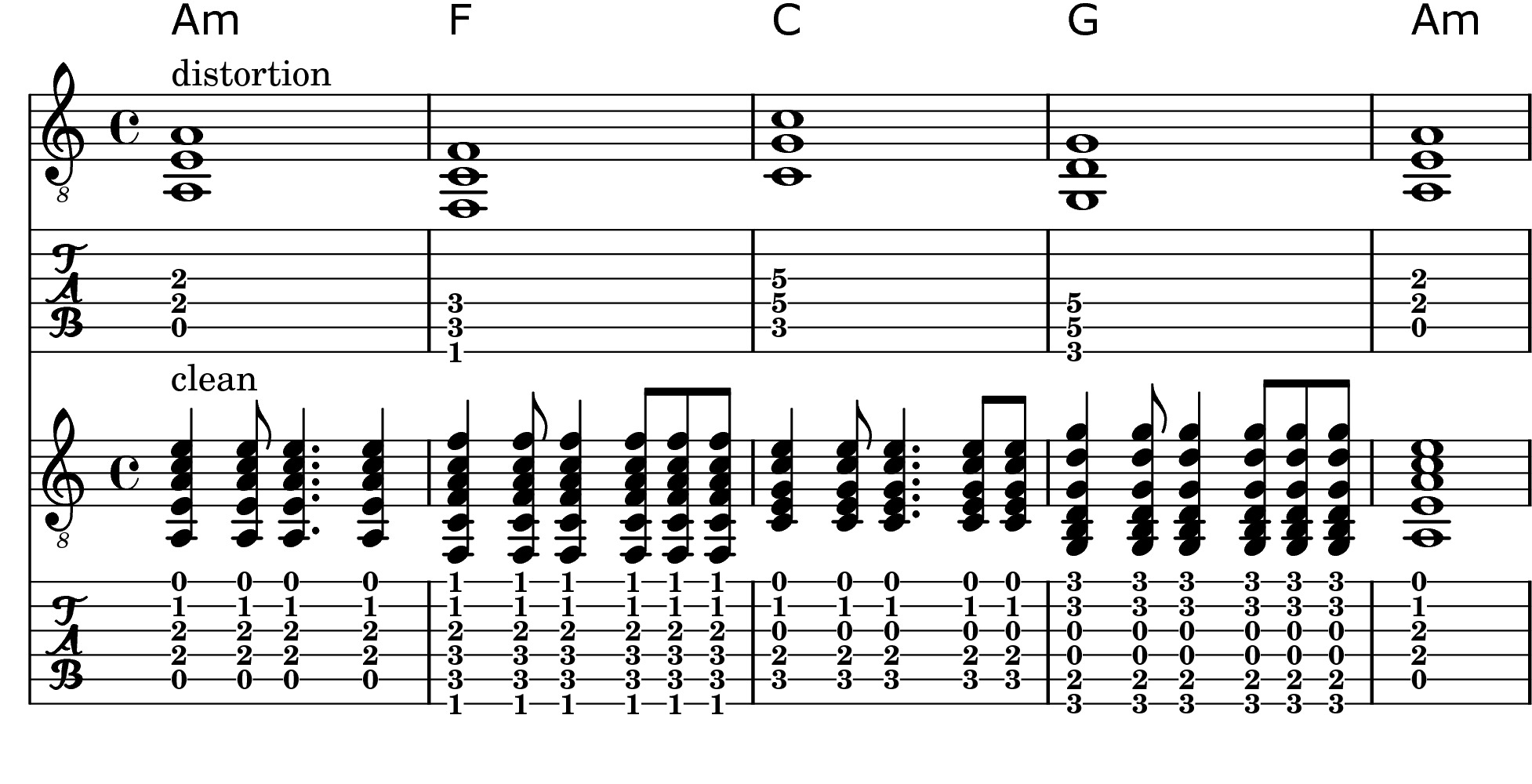
But of course we can also use something a bit more elaborate (LISTEN TO IT):
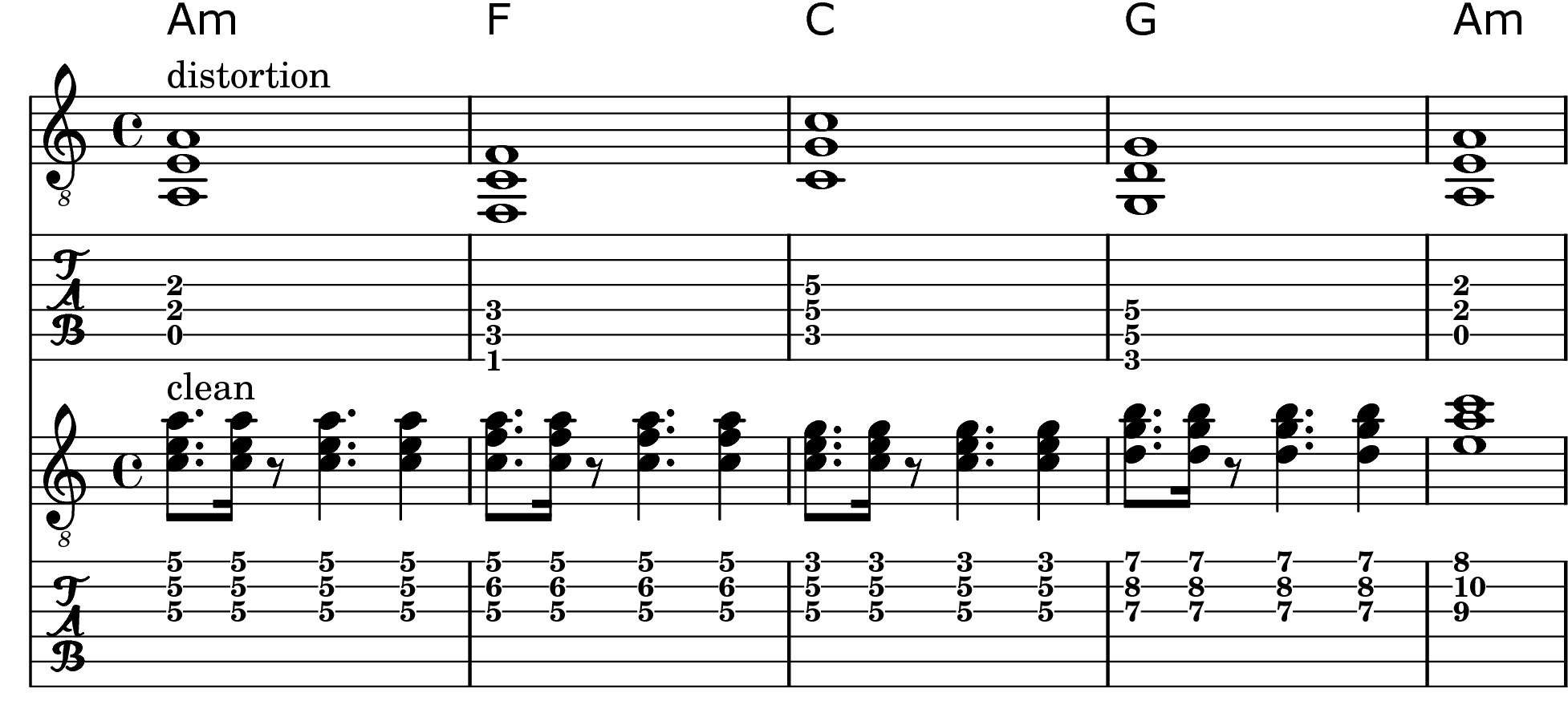
Power Chords and Simple Arpeggios
While the distorted guitar keeps playing power chords, the clean one can play an arpeggio. We can use the same “open strings” chords we used before, but now the effect is completely different (LISTEN TO IT):

Power Chords and Unusual Arpeggios
Another idea is for the clean guitar to use some more elaborate harmony to play its parts. This makes for a very distinctive sound and helps break the monotony of simple triads (LISTEN TO IT):
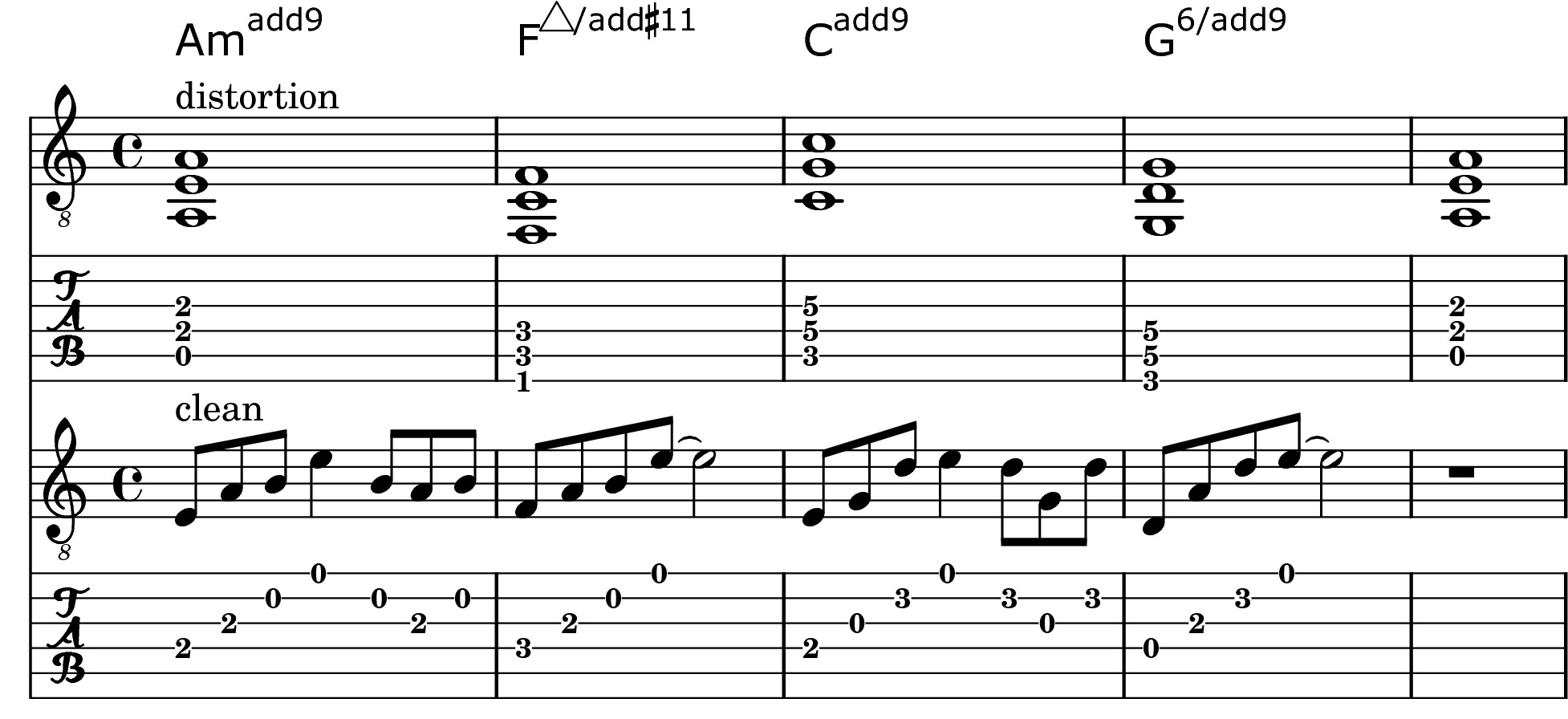
Riffing and Arpeggios
Finally, we can have the distorted guitar to play something more elaborate than simple power chords. Here the clean guitar plays one of the previous arpeggios, but we create a more dynamic part for the distorted guitar. (LISTEN TO IT):
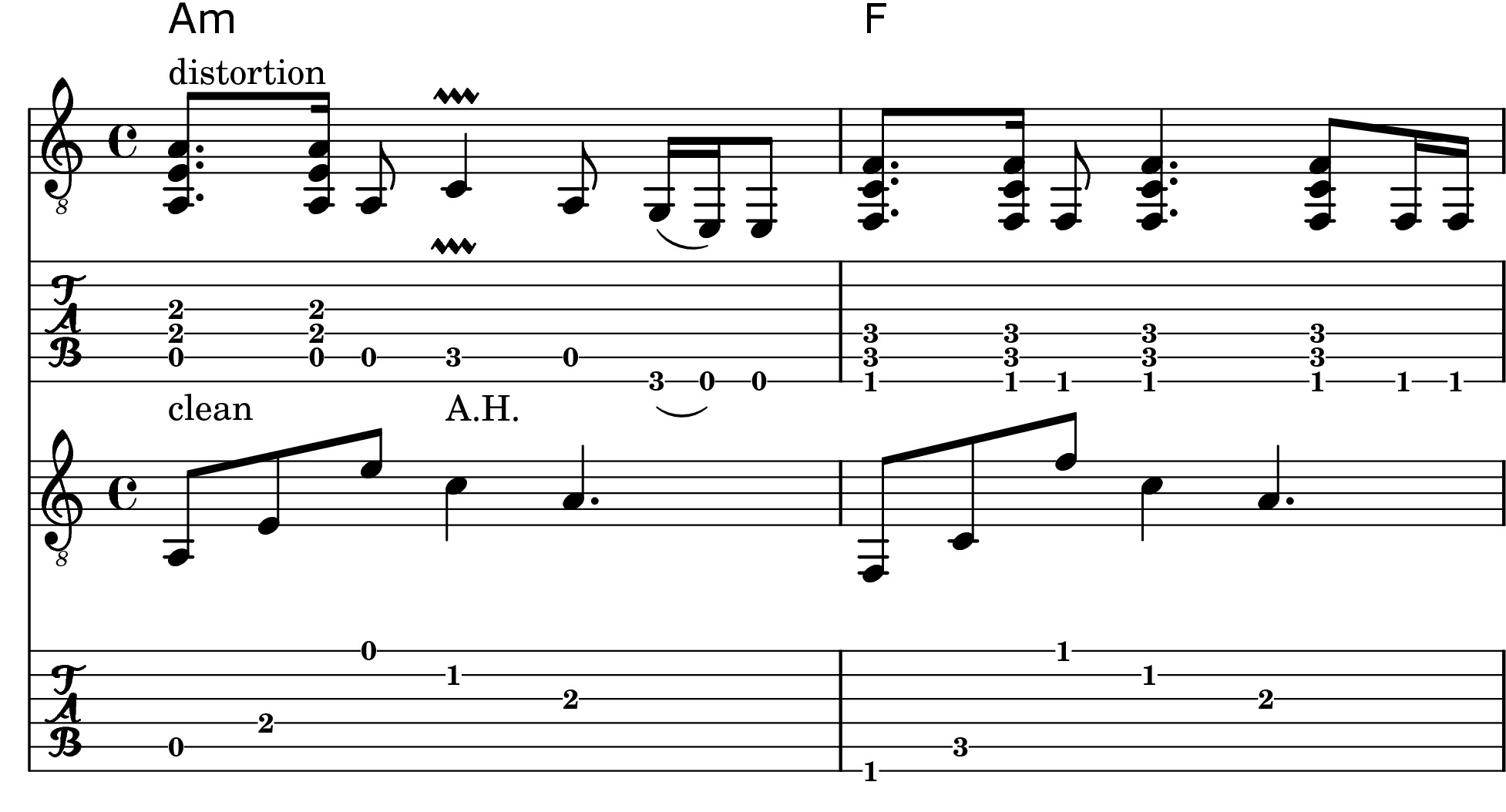
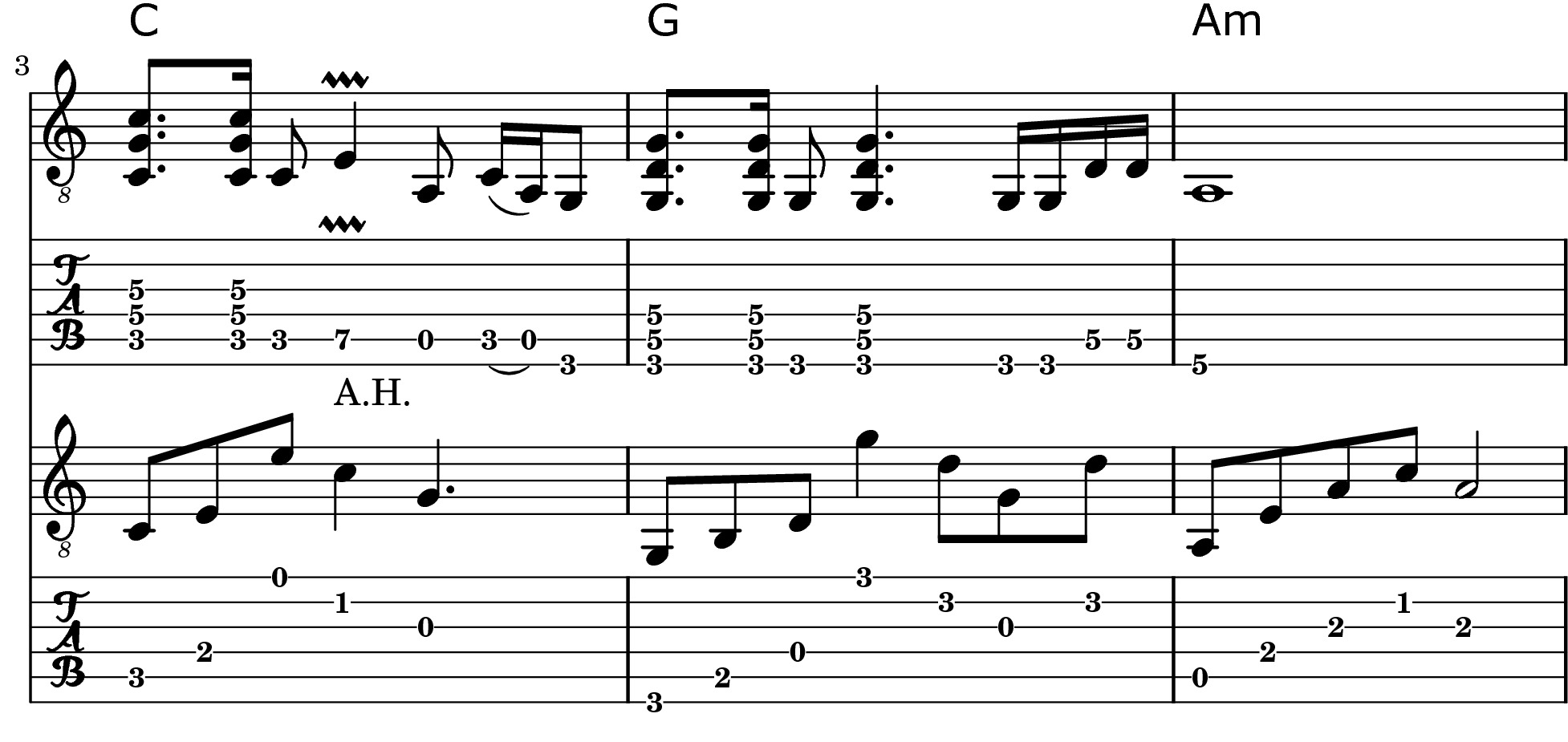
This is all for Part 1, stay connected for Part 2. And have fun playing in your 2-guitar band!
Feel frustrated trying to learn about scales and modes on guitar? Click the button below to find the solution.
